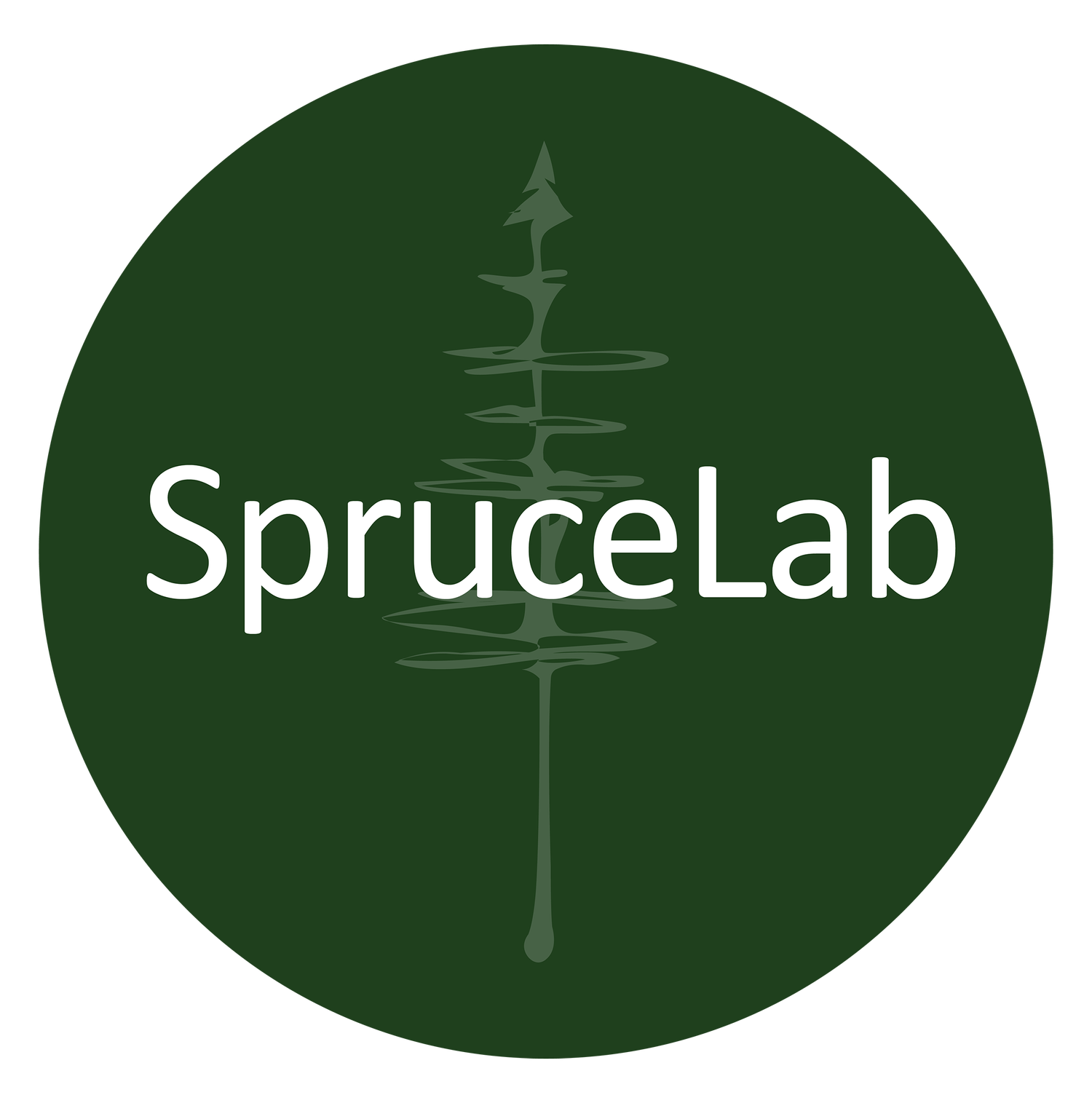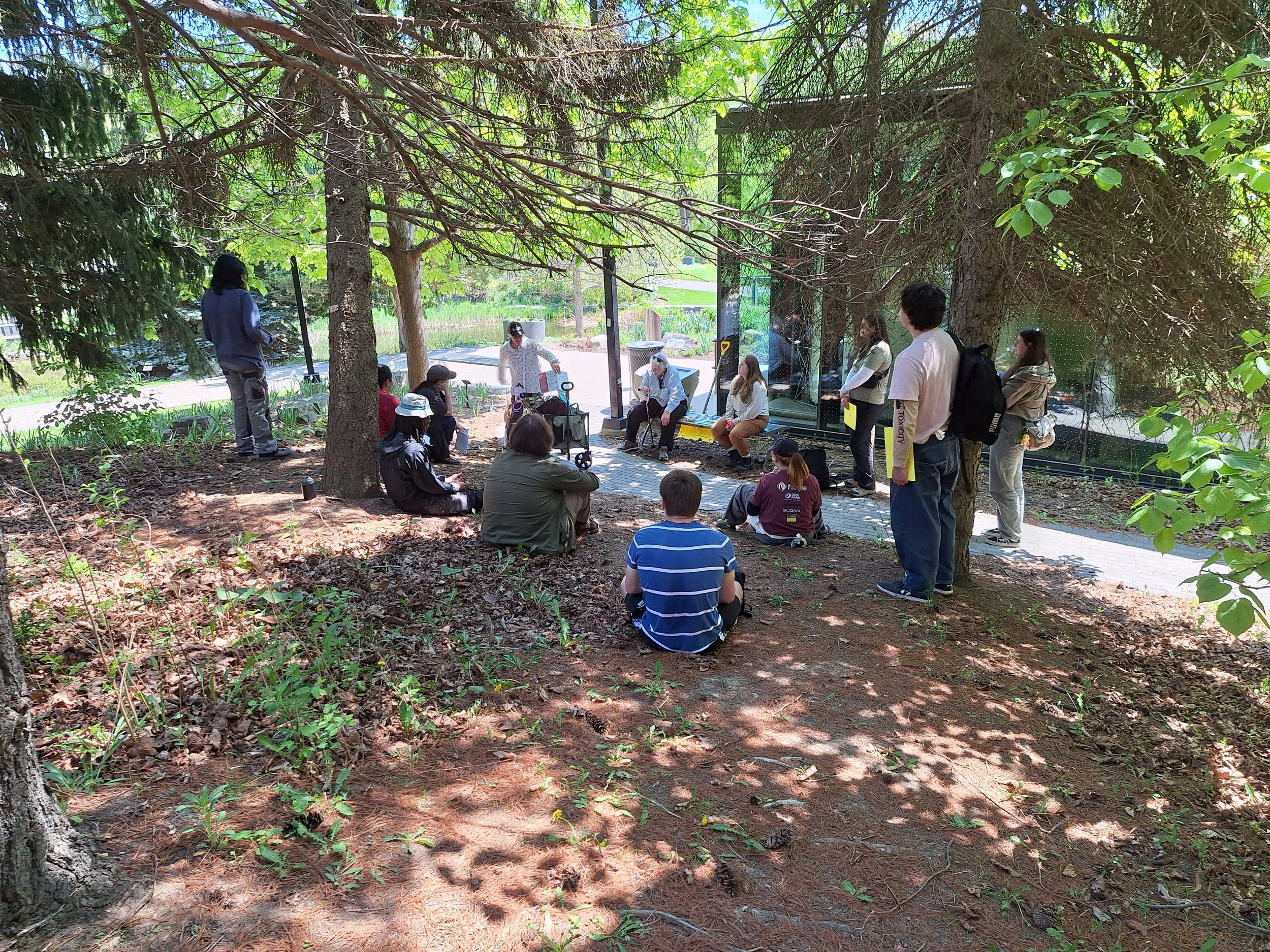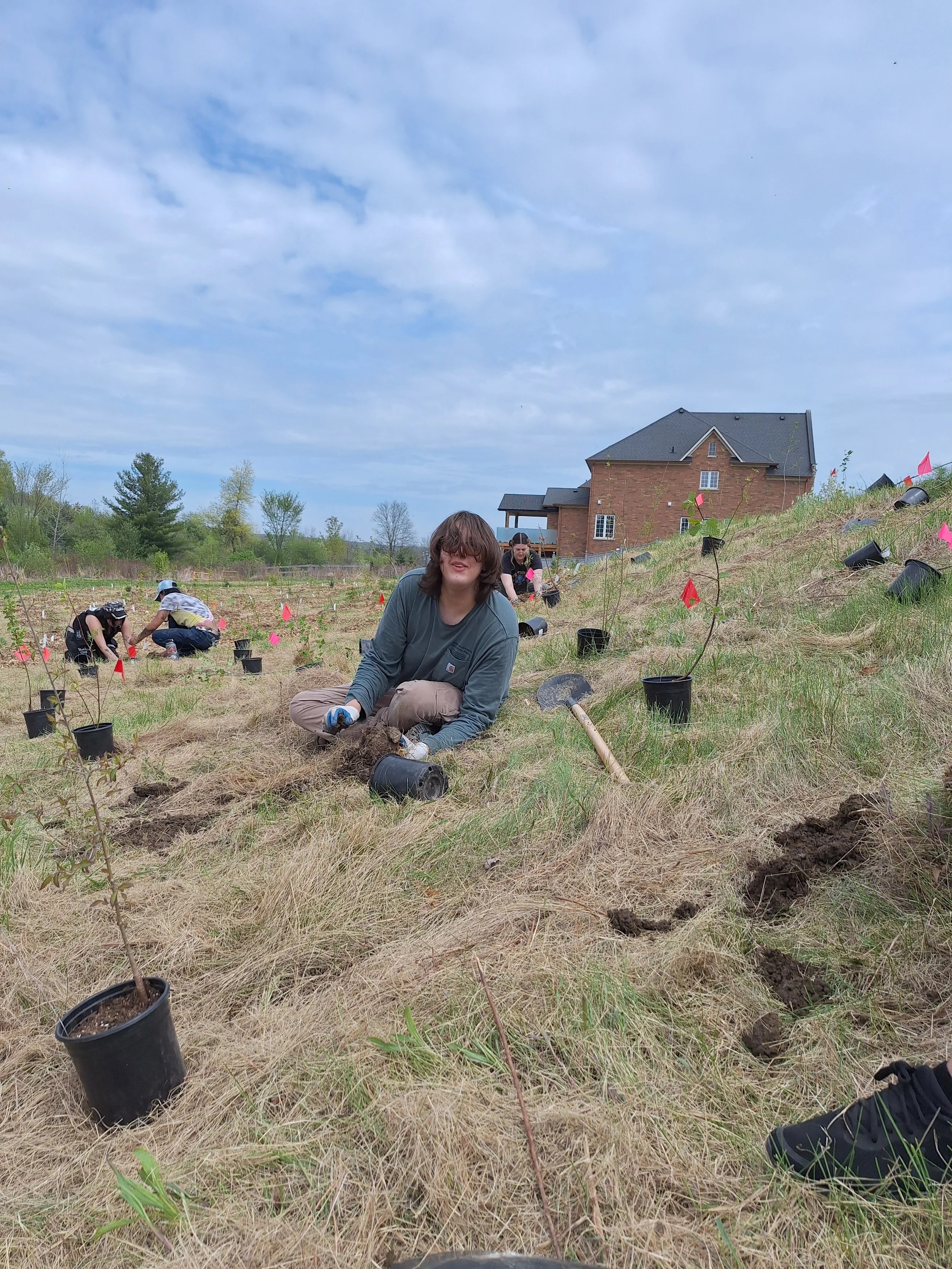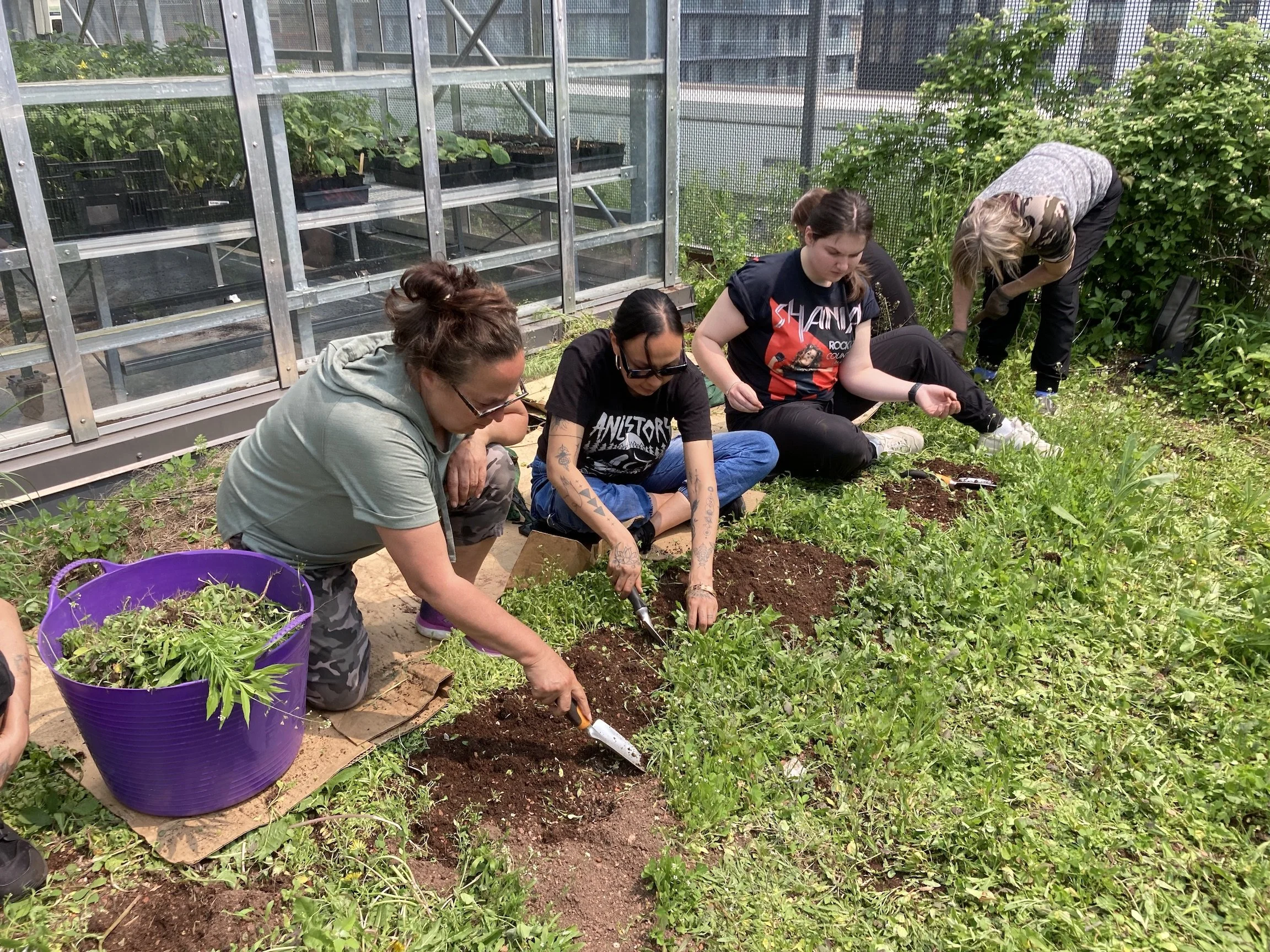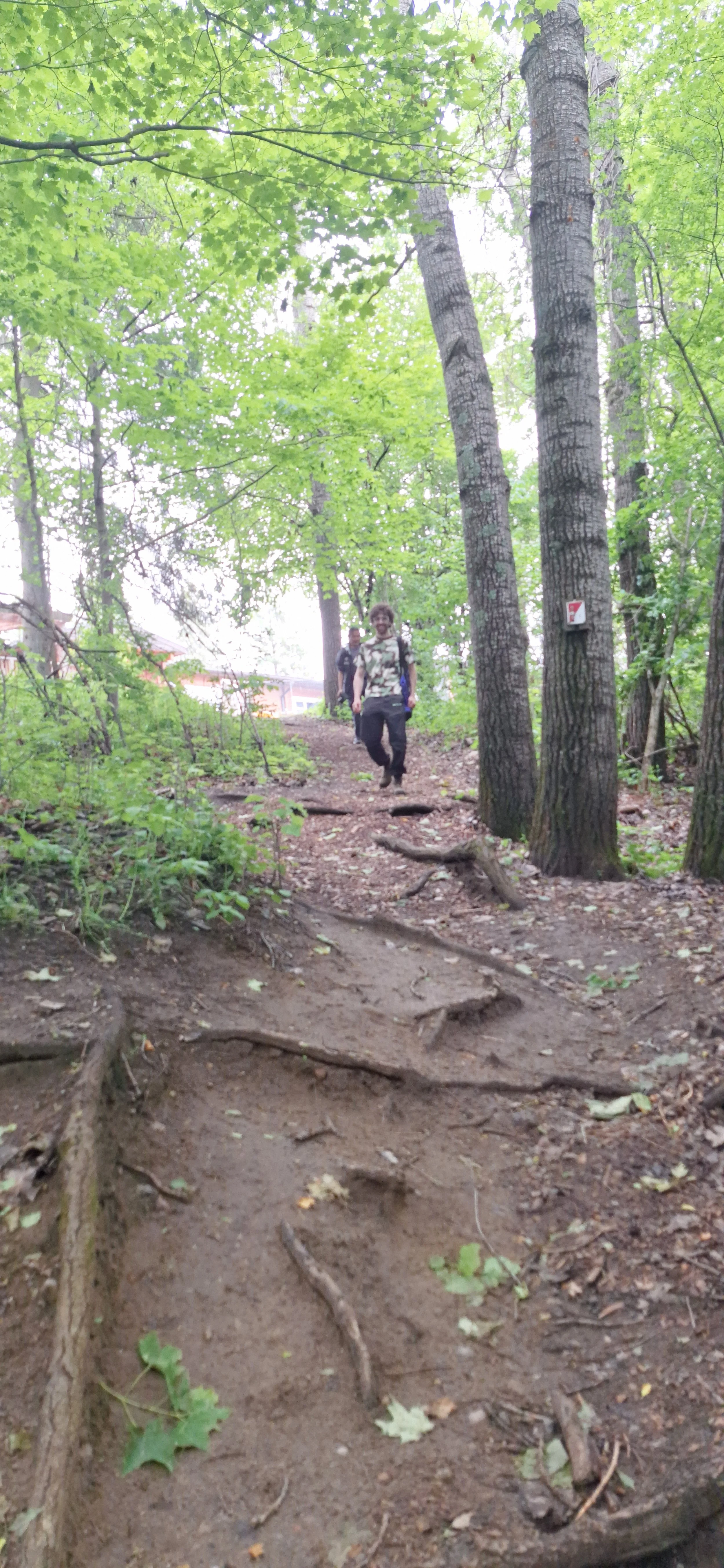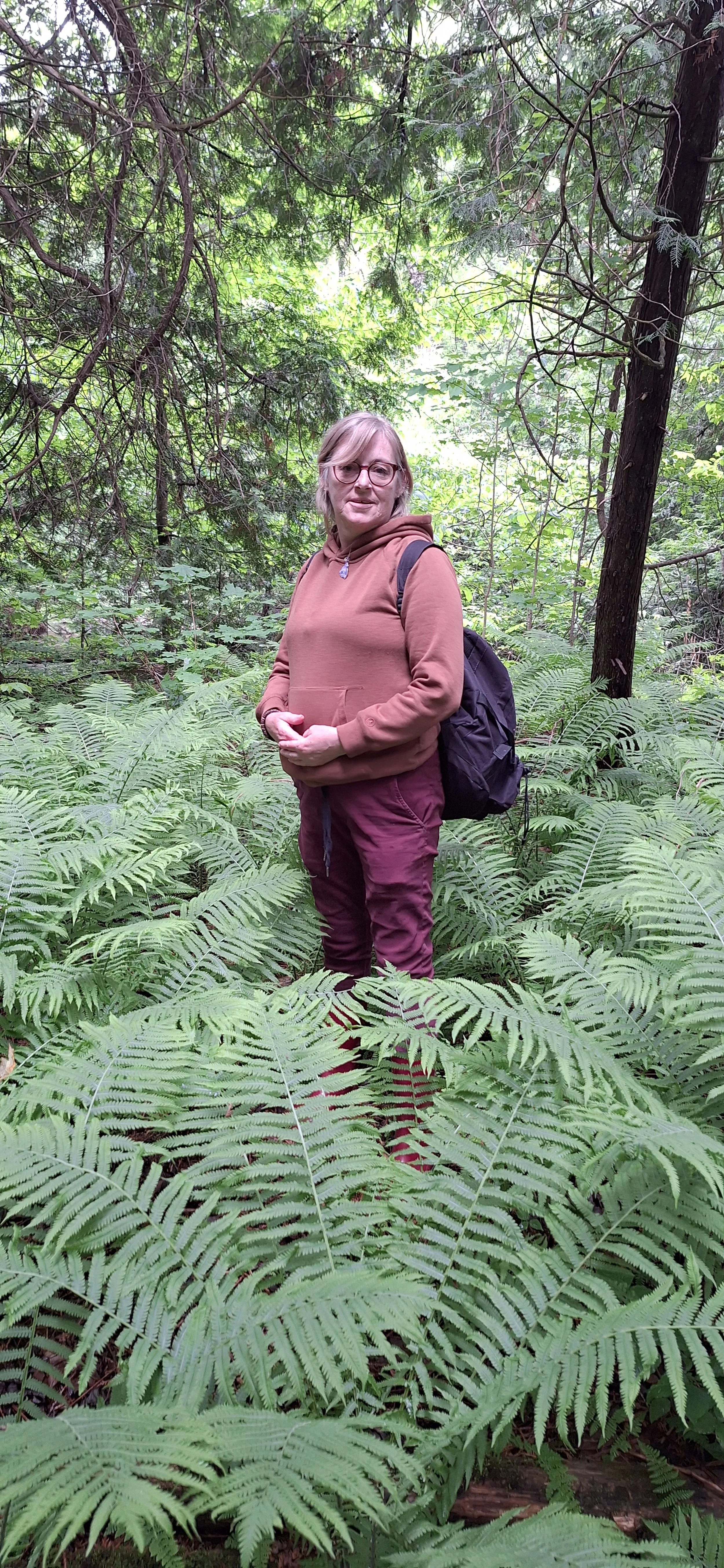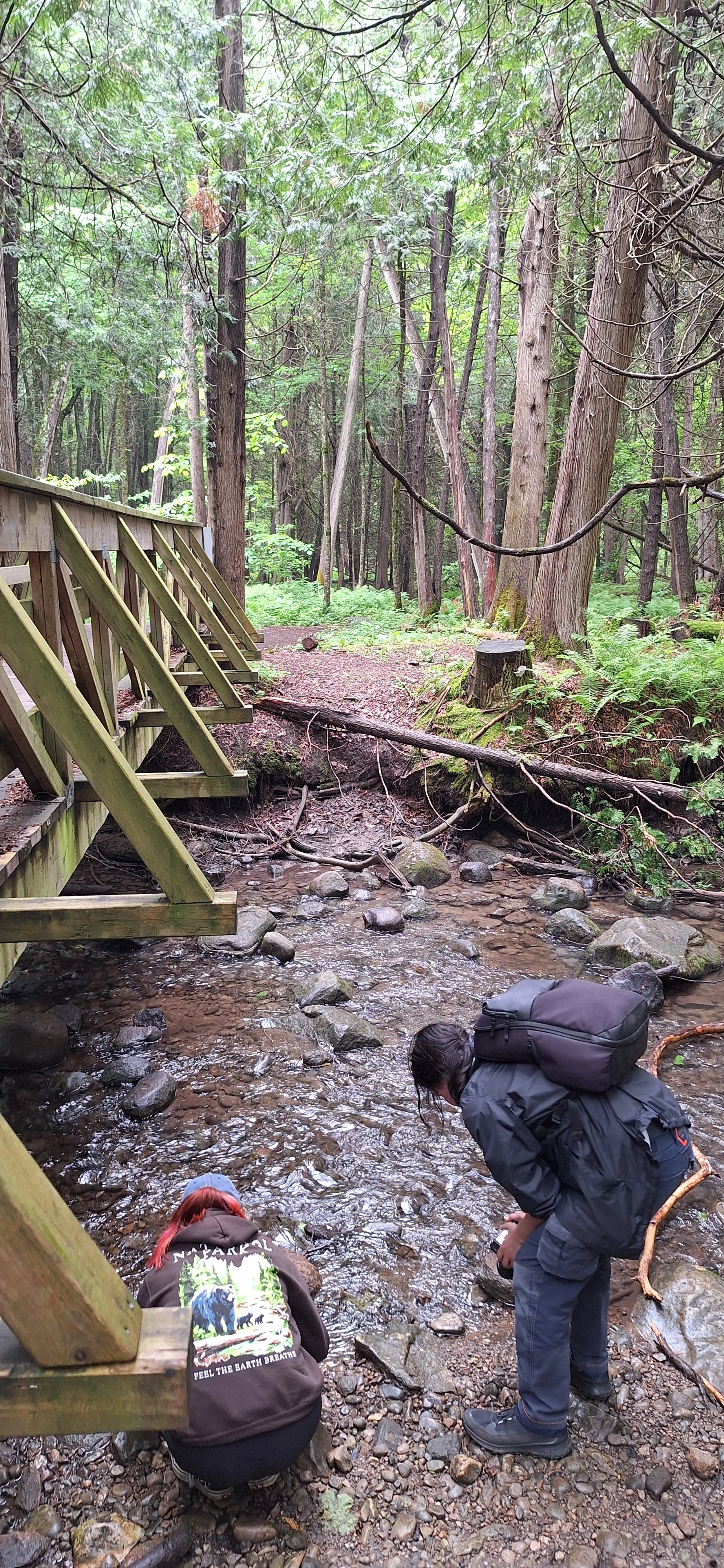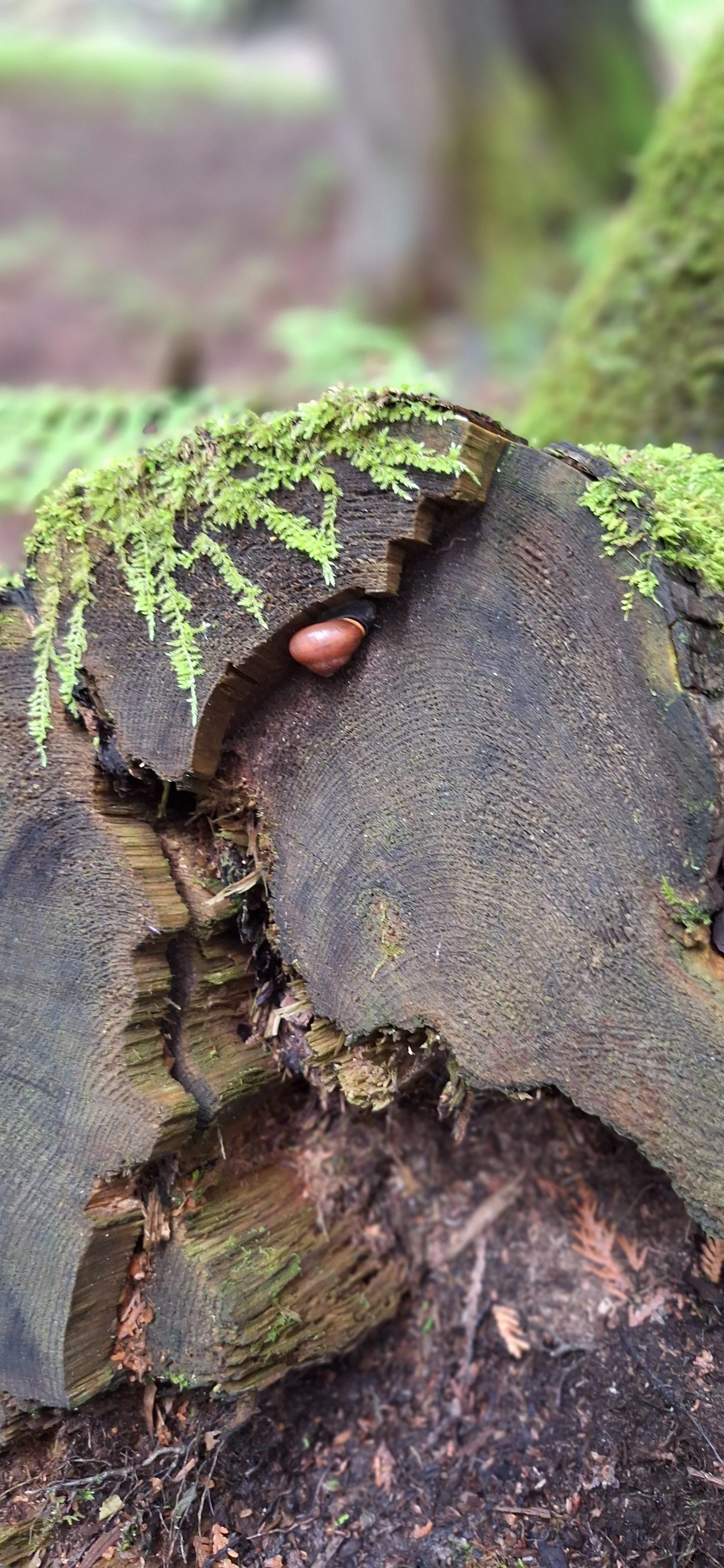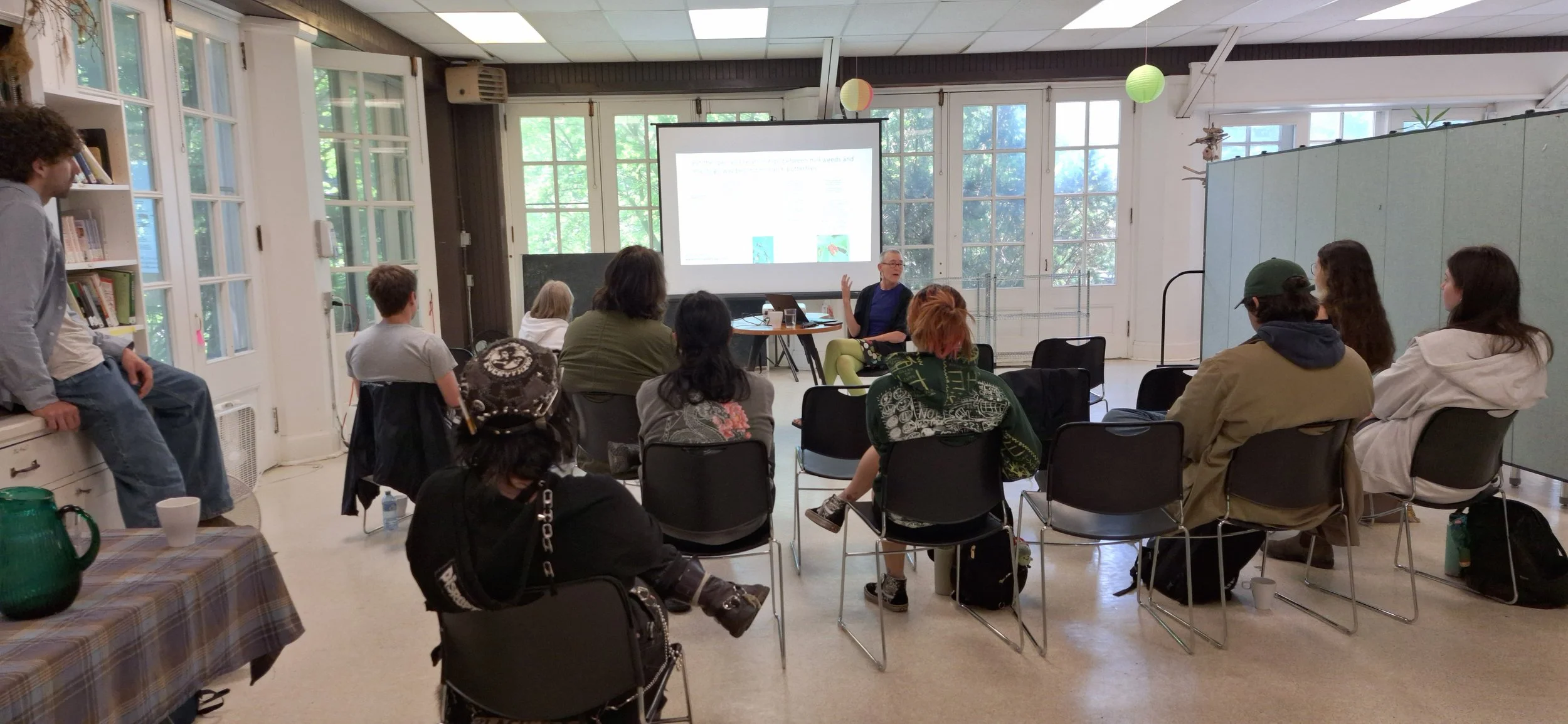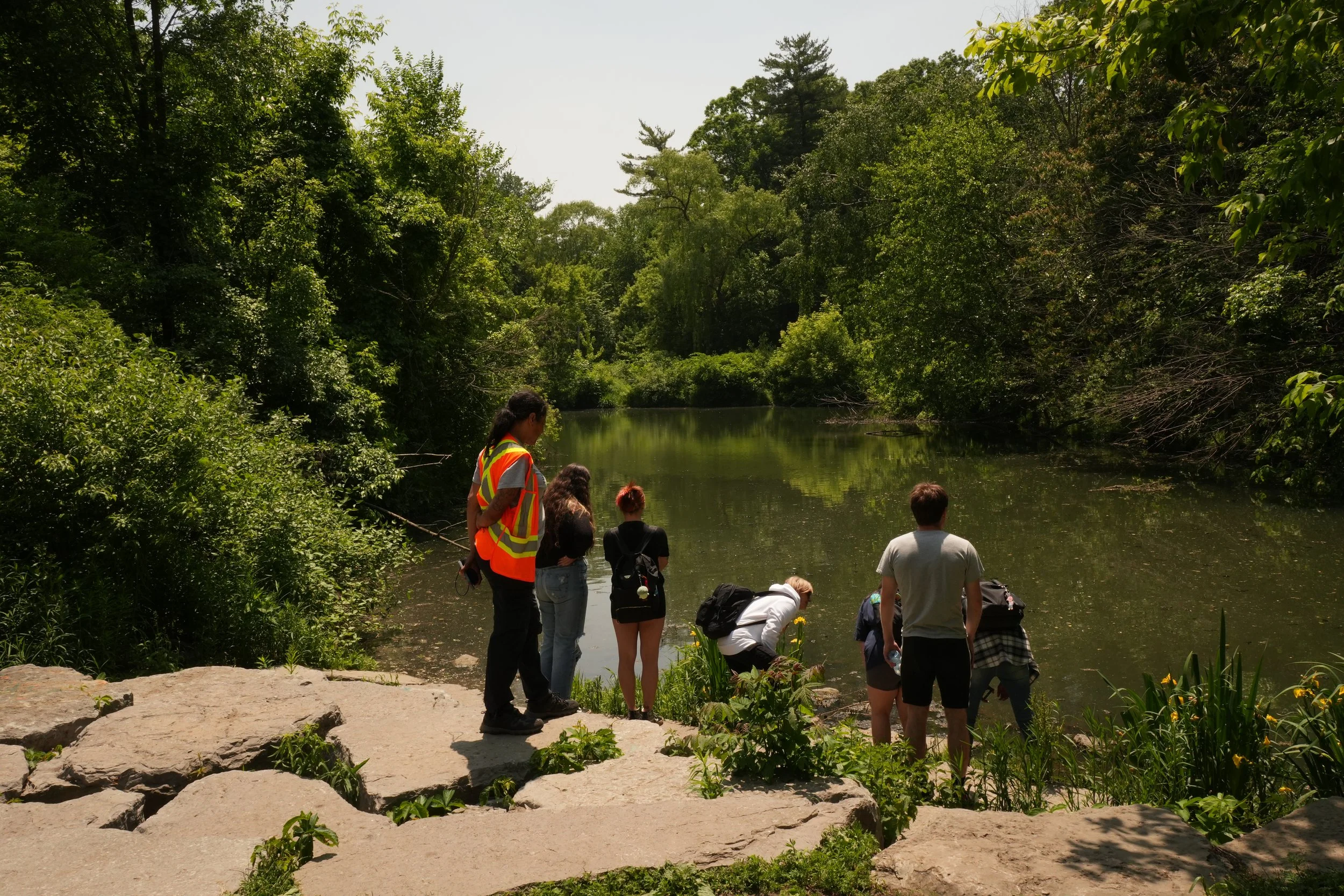Earth Tending 2025
The Earth Tending program, core funded by Miziwe Biik, started its fourth year with ten keen Indigenous trainees. The six-week program began with a Traditional opening ceremony at High Park Nature Centre on May 1, 2025. The program, held on Tuesdays and Thursdays, included workshops, talks, hands-on training, and all-day trips. Each day was packed with introductions to green infrastructure, food sovereignty, conservation areas, plant and tree identification, community urban farming, green roofs and traditional knowledge teachings, to name a few.
I had the pleasure of leading this year’s program with the support of two previous Earth Tending participants. New beginnings weaved themselves into beautiful baskets of knowledge, inspiration, remembrance, hope, laughter and newfound strength amongst this year's group.
The opening ceremony on the first day was facilitated by Elder Jimmy Dick, a member of Moose Cree First Nation from the community of Moose Factory, Ontario – located in James Bay and within the Nishanawbe-Aski Nation. He’s fluent in the Cree language, and a teacher on Indigenous culture and spirituality. Jimmy has been actively involved with community since moving to Toronto in 1975. He is a longtime volunteer in the Toronto native community and has served as a board member with various agencies.
We then proceeded on a turtle walk led by Carolynne Crawley of Msit no'kmaq and Turtle Protectors, where we learned about the history of the lands of High Park Toronto and teachings about the plant and wildlife within the park. Sacred Water Teachings shared by Luana Harper Shirt (Indigenous Culture Educator) graciously came in person from Orillia on our Opening day, which was the first time I met her in person and was so lovely. She left us reflecting about Creation, Serpents and to respect and honour the Water wherever we may be, how we use the water, as Water is Life.
Friends of Allan Gardens and Garden Jane led engaging workshops with talks, tours and hands-on learning. We enjoyed soil health talks, participated in worm composting, made seedballs, and planted in the new community raised garden beds. We toured the two wonderous greenhouses which was enjoyed by all. We were also introduced to the basics of permaculture and had a delightful tour of the tropical fruit and cacti plant life in the children’s place conservatory and finally we tended to the Healing Garden at Miziwe Biik, across the street, which was planted by the Earth Tending group in 2023.
Presentations and tours from Landscape Ontario Horticultural Trades Association - Landscape Ontario, City Forest, and ACER – Association for Canadian Educational Resources proved there’s more to trees than we think. They shared information on tree care, bioretention, and the benefits of soil cells in infrastructure. All-day trips to the Humber Arboretum, King City, and Kortright Centre for Conservation (and the Earth Rangers Centre) were highlights. Sustainable Technologies Evaluation Program (STEP) shared information on green and grey infrastructure, maintenance, and permeable pavers research methods. We also learnt how to do key identification, spot tree diseases, and we enjoyed Sadia’s entourage, her cheerful dog. We also thoroughly appreciated Alice’s energetic and passionate sharing of plant and tree knowledge, and she left us with a few humorous life lessons.
We looked forward to different workshops and travel days. Our van excursions to various Greater Toronto Area conservation areas were filled with snacks, good food, anticipated walks, and hikes that we all loved, and an appreciation for Mother Earth as we explored all her wonders. Other days, accessible by transit, entailed a hands-on day at Flemo Farm, where we learned about composting, weeding, irrigation, transplanting seedlings and how the farm supports the diverse community’s food sovereignty. Pro farming tips, marketing talk and the experience of being a community urban farmer was insightful. I want to go back in July and see his giant famous beets that he grows. Our newest additional workshop was spent with Lara of Miinikaan Innovation and Design’s gardens at the Albert Campbell Library weeding and planting the front scape of the building. We also enjoyed a traditional lunch prepared by Nish Dish. The group enjoyed learning about Sweetgrass teachings and Gitchi Sabe (Bigfoot) shared by knowledge keeper, Judy Sackaney, and we’ll go back later in June to harvest sweetgrass to take home and braid.
At tree and shrub planting with LEAF, the group learnt how to properly plant a tree, input data, and calculating spacing and zoning areas. It was a hot and sunny day, the soil was compacted, and the terrain was challenging, but everyone enjoyed the experience and left content that their trees will grow and survive.
Participants learned about green vs. grey infrastructure. Examples of grey infrastructure include pipes, drains, and retention ponds, which are constructed into designs. Green infrastructure focuses on nature-based solutions such as rain gardens, permeable paving, trees, and green/blue roofs. ZinCo Canada and Next Level Stormwater Management educated us about various green roof systems, explaining that green roofs do more than just grow food. They assist in cooling environments, supporting biodiversity, purifying air, reducing pollution, and aiding in stormwater control. We visited the Toronto Metropolitan University Urban Farm, which dedicates traditional medicines and traditional food production to Indigenous Foodways Indigenous Foodways and a diversity of global crops for the Black Food Sovereignty Programs. This year we planted 25 Strawberry plants in the east side area of the building where we spent time weeding, digging and preparing the site for their arrival, and created a tomato trellis.
This successful community-oriented business operates out of a small space yet yields plenty. With a passion for local food security, they offer tours and workshops and are making positive changes in the community. Fyi, their seasonal 2025 goal is to grow a 1,000 lb pumpkin.
Native plants and restoration ecology were covered at Native Plants in Claremont and at Claremont Nature Centre. A warm display of snacks and beverages was prepared for us, followed by a tour of their operations, medicine garden, ravines, and greenhouse setup with a filtered water system. The visit provided a great understanding of how they operate their efficient nursery. We were gifted Sweetgrass and departed in gratitude for their warm welcome and gracious hosting. An ecological walking tour of the conservation lands at Claremont Nature Centre, led by an Toronto and Region Conservation Authority ecologist, was awe inspiring. The enthusiast group chose to hike the longer hiking forest-ravine trail and would have loved to stay for many hours more, but the mosquitos had other ideas.
A pollinator and native species educational presentation by Lorraine Johnson who shared her knowledge and wisdom about the extraordinary intelligence and importance of the bees, butterflies and the Nature that is all around us, as we are all connected. Interactive discussions about the importance of planting and doing our own landscaping at home. Being creative and an opportunity to learn much more from her collection of books that she has authored.
Learning about the Revitalizing Our Sustenance Project with Denise Miller was interesting as she shared her personal journey that led her to create this much needed project involving the youth in her Community in Six Nations of the Grand River. Growing food that is dedicated to Haudenosaunee food systems, seed sovereignty, community programming and environmental awareness. We would like to learn more about Seed saving and the group was invited to go and pick strawberries at the farm in June.
In the final weeks, I heard trainees use words like:
“I feel more connected to Nature.”
“Indigenous trainers helped me feel more rooted.”
“I see ways to help reconnect ourselves even more to Nature.”
“I re-experienced Nature.”
“I feel more aware, my eyes peeled to look for more things that I have learned, more and more.”
I see a theme here, that Mother Earth is asking us to remember, reconnect and re-root. - we are ever so grateful.
It’s been rewarding for me to see and know that this program is so valued and inspirational to the trainees, trainers, and our team. The program is like a Perennial flower, growing each year, evolving, sharing knowledge and blossoming as only Mother Earth knows how to do and does.
-Chi Miigwech - Gwen Lane
